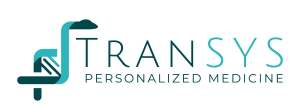 Markus Butz-Ostendorf
Markus Butz-Ostendorf
Innovation Manager Brain Science
BIOMAX
Friday 27th November 2020 09.00 CET
Mining and digesting tons of information
Abstract:
Typically, data of large-scale multicenter projects is distributed over different data centers run by the participating universities or research organizations. Different and largely fixed infrastructures, processing pipeplines and access restrictions significantly hinder interoperability. Furthermore, public data from public sources, knowledge bases and ontologies cannot be linked to project’s research data but need to be manually annotated by metainformation. Here, we present a technology that overcomes the hurdles of interoperability. BioXM platform technology (https://www.biomax.com/bioxm)
is a proprietary client-server architecture solution by Biomax that has been proven successful in numerous large-scale research projects and long-standing industry customer relationships. BioXM uses knowledge models to describe all data and information items available in a project as semantic objects and links them by their semantic relations. It furthermore puts biological data items into their semantic contexts knowing more than 80 public databases and ontologies for semantic enrichment. BioXM uses these knowledge models to directly orchestrates database access for data of any modality, size and location. In addition, Biomax offers with NeuroXM™ Brain Science Suite (https://www.biomax.com/neuroxm) and NICARA™ https://www.biomax.com/nicara extensions of BioXM particularly for neuroscience data. In this lecture, we will provide an introduction to the concepts of knowledge models for semantic data integration, will show a making off of how to start a BioXM project from scratch and finally demonstrate, as an example, how to integrate multimodal connectome data from the Human Connectome Project with multiarray gene expression data from the Allen Human Brain Atlas.
Biography:
I am Innovation Manager for Brain Science at Biomax Informatics. I invented and together with my team developed the cutting-edge brain science solutions NeuroXM™ Brain Science Suite and NICARA™ (NeuroImaging-based Connectome Assessment in Research and Application), which offer fully new opportunities for personalized medicine in neurology and psychiatry. My deep knowledge in brain science is grounded on more than 15 years of experience in computational neuroanatomy. I postulated a new theory on homeostatic structural plasticity and formulated the Model of Structural Plasticity (Butz and Van Ooyen, 2013, PLoS Comp Biol), which has proven to be suitable to grow a full human brain connectome in-silico from scratch (Rinke et al., 2018, Journal of Parallel and Distributed Computing) and to be a suitable model for emerging critical periods in cortical development (Rinke et al., 2017). More than once, my papers were selected as publication highlights by the Human Brain Project (https://www.humanbrainproject.eu/en/about/project-structure/subprojects/). I am author of numerous publications in the field and editor and author of the text book THE REWIRING BRAIN, Academic Press 2017. Furthermore I am member of the editorial board at Frontiers in Neuroanatomy.

